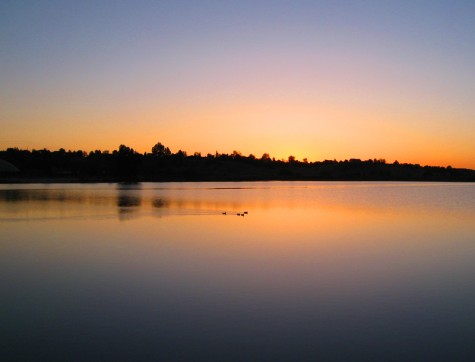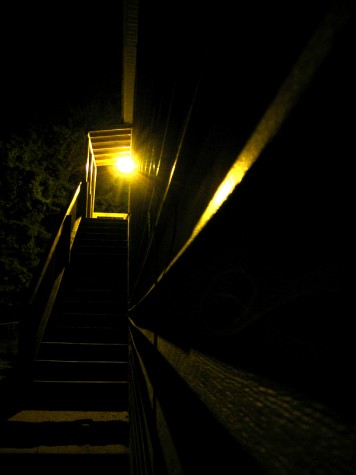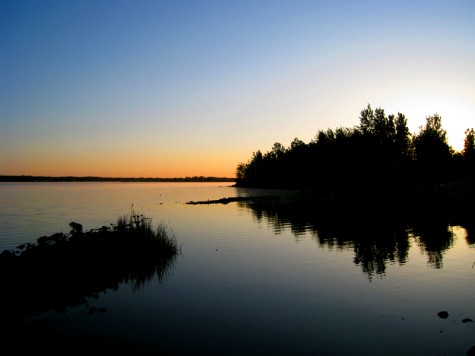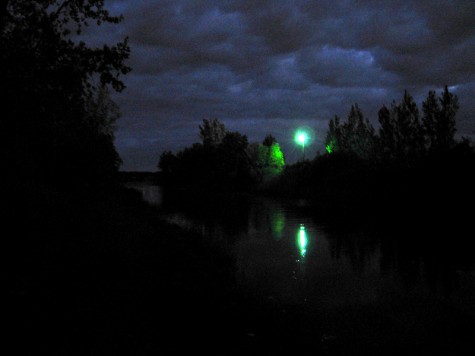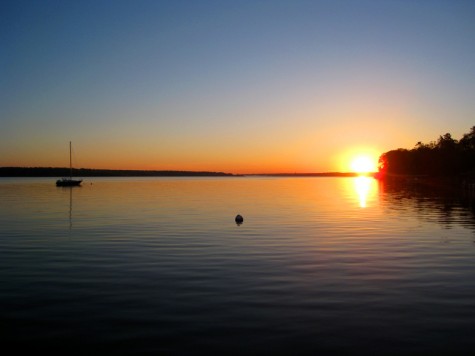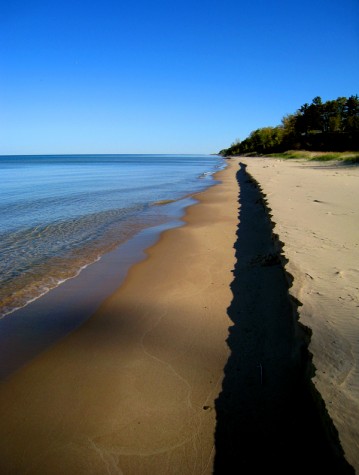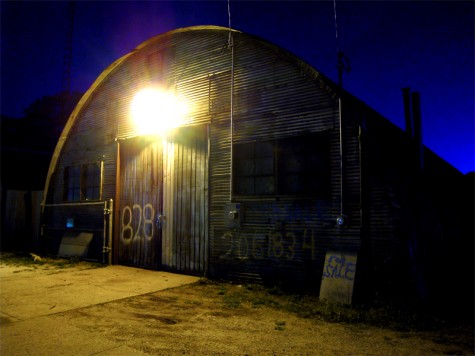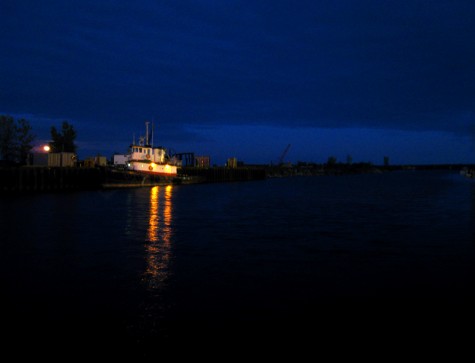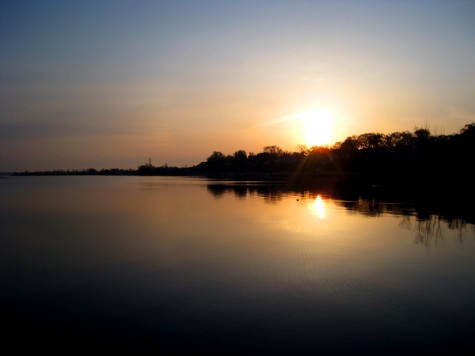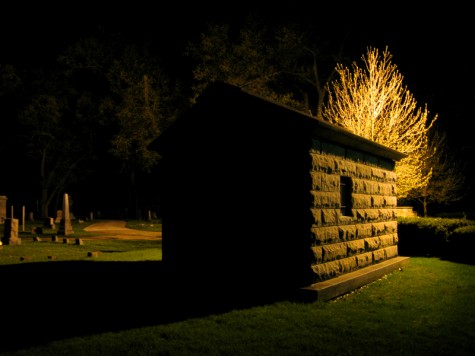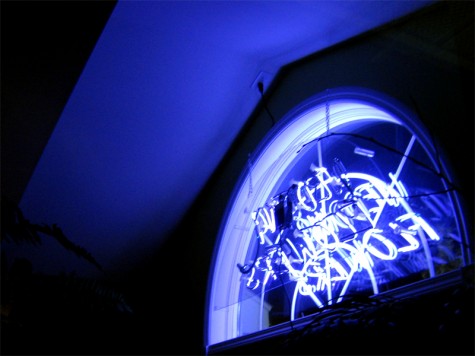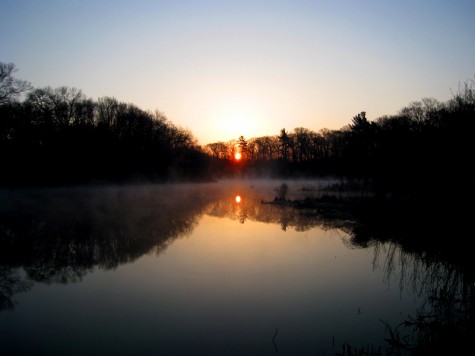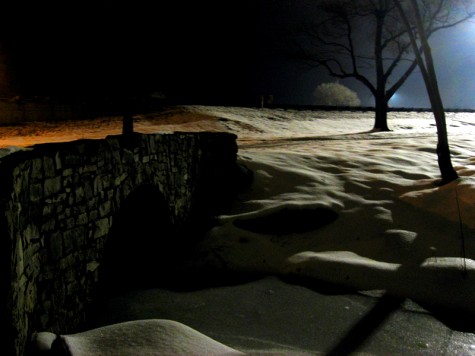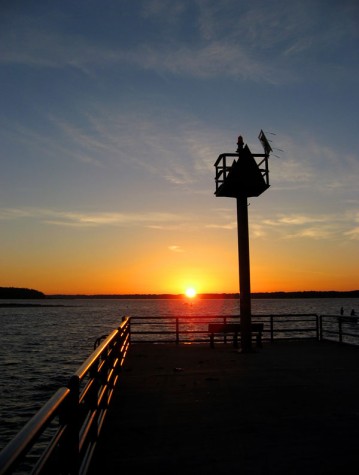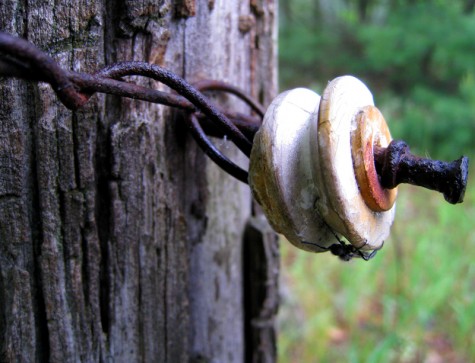
A spider inspects an old isolation spindle near a horse farm on Lakewood Road in Fruitland Township.
Category: All Photos
All photos on Mostly Muskegon
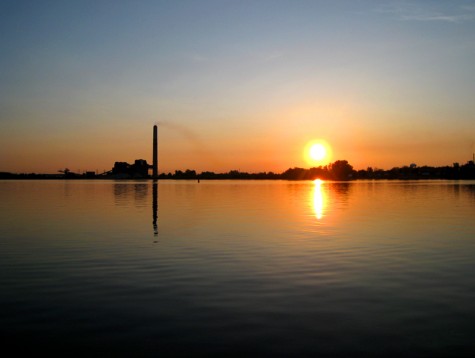
The June 2, 2008 sun rises over Muskegon Lake seemingly near to the B.C. Cobb power plant.
Ducks on the pond, May 30, 2008
White Lake, May 25, 2008
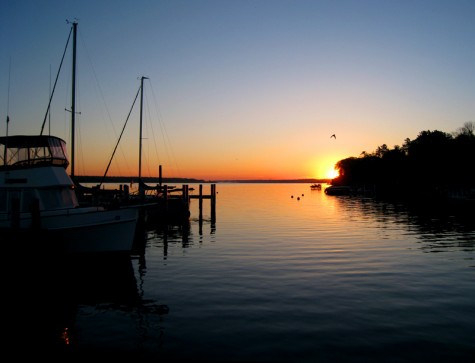
Looking past the White Lake Yacht Club docks at the May 25, 2008 sunrise over White Lake.
The WLYC is housed in a beautiful building just inside of and south of the White Lake channel. My understanding is that it has been there for over 100 years. For a little more background, here is the text from the club’s state historic marker:
By 1897 most of White Lake’s bustleing sawmills had given way to small hotels. Promoters advertised the area’s cool temperatures as a relief from the summer heat of cities and drew thousands of people to the area, many from Chicago.
During the winter of 1902 – 1903 the White Lake Yacht Club formed. The club hired Chicago architect Robert Rae, Jr. to design the clubhouse which opened in 1906 with a large ballroom and bays for boats.
By 1922 summer tourists were traveling more by car than boat, and golf surpassed sailing in popularity. The White Lake Yacht Club fell into disrepair.
In 1925 Henry Sturtevant saved the building, mostly with his own funds, and Clarence Pitkin brought national power boat races to White Lake. Interest revived and the club reopened, offering a sailing school, boat races, swimming lessens, and social events to members and their families.
The increased water levels have really changed the look of this Lake Michigan beach. The newly eroded sand casts a long shadow in the morning light.
A tugboat just across the channel from the Muskegon Fisherman’s Landing boat lauch on May 20, 2008.
Flower Shop Sign, May 6, 2008
This is the bridge at the north end of the Muskegon Log Booming Company pond on December 21, 2007.
There is a state historical marker on the other side of this pond that makes for very interesting reading. It says that…
Muskegon was the largest center of lumbering on Lower Michigan’s west coast. From the 1850s to the 1890s an immense amount of timber was floated to this port down the Muskegon River and its tributaries.
In 1864 the Muskegon Booming Company was formed to sort the logs and raft them to the mills. Here at the upper end of Muskegon Lake was the great storage boom where the logs, each identified by its owner’s log mark, were sorted into pens as fast as they floated in. They were then chained together into rafts which were towed to the mills by the company’s tugboats.
In thirty years the company delivered over ten billion board feet of logs.


